Bactericidal Activity of Aqueous Acrylic Paint Dispersion for Wooden Substrates Based on TiO2 Nanoparticles Activated by Fluorescent Light
Abstract
:1. Introduction
2. Results and Discussion
2.1. Preparation and Characterization of the AEROXIDE® TiO2 P25 Coatings
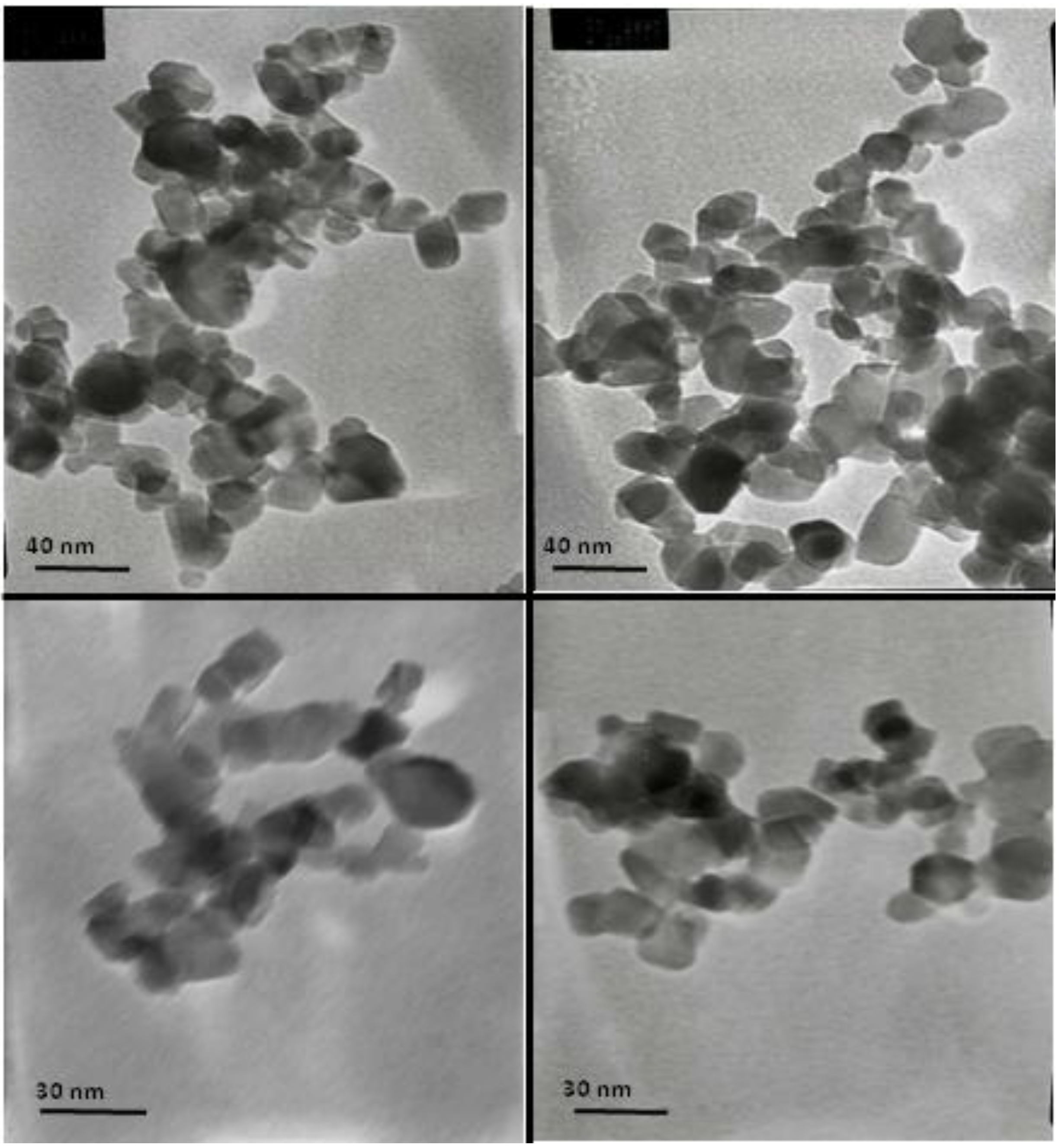
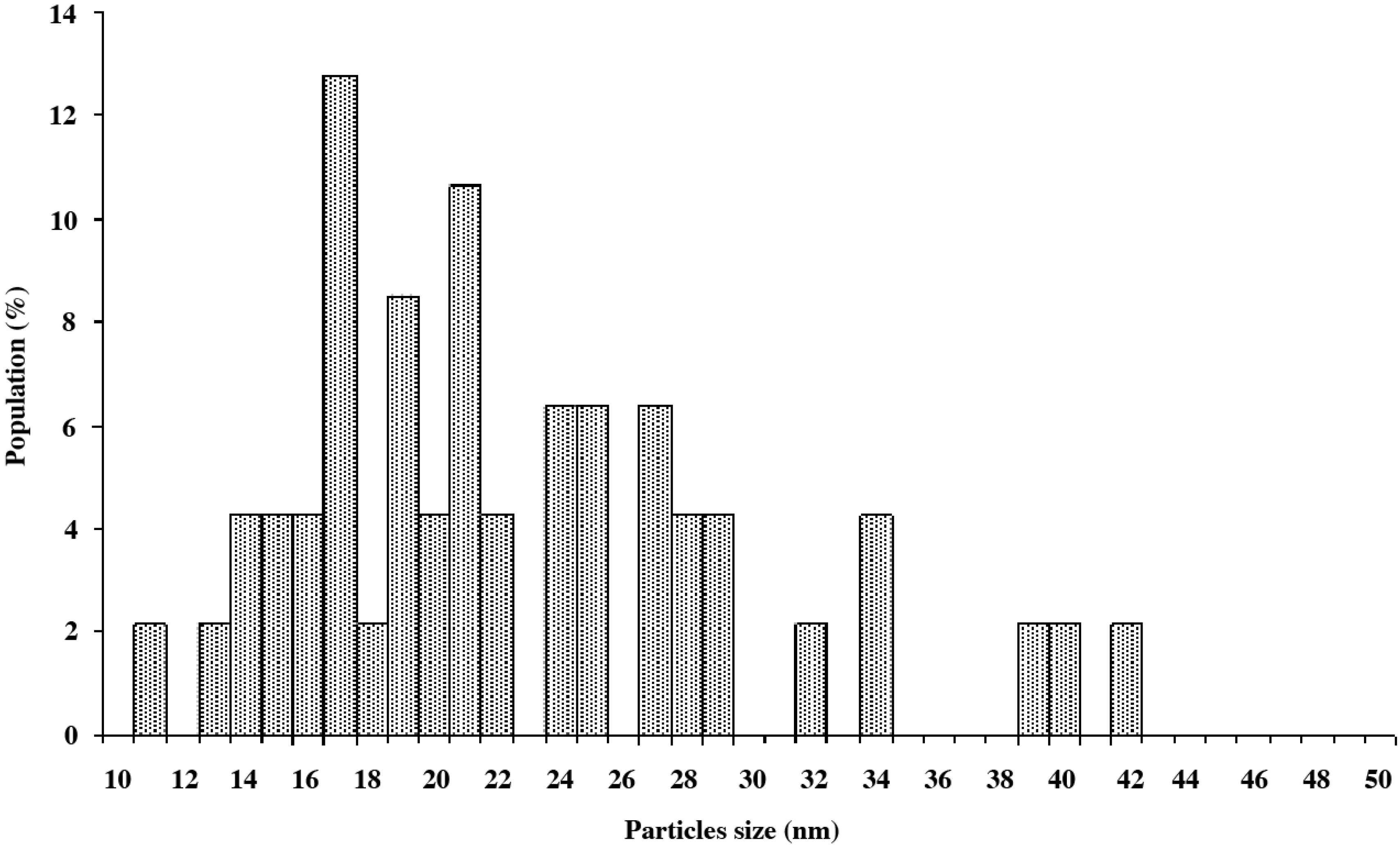
| Sample | XRD | TEM | Specific surface area (m2/g) | |
|---|---|---|---|---|
| Structure | Crystallite size (nm) a | Average particles size (nm) | ||
| Aeroxide® TiO2 P25 | Anatase:Rutile 85:15 | 24.2 | 22.6 | 43 |
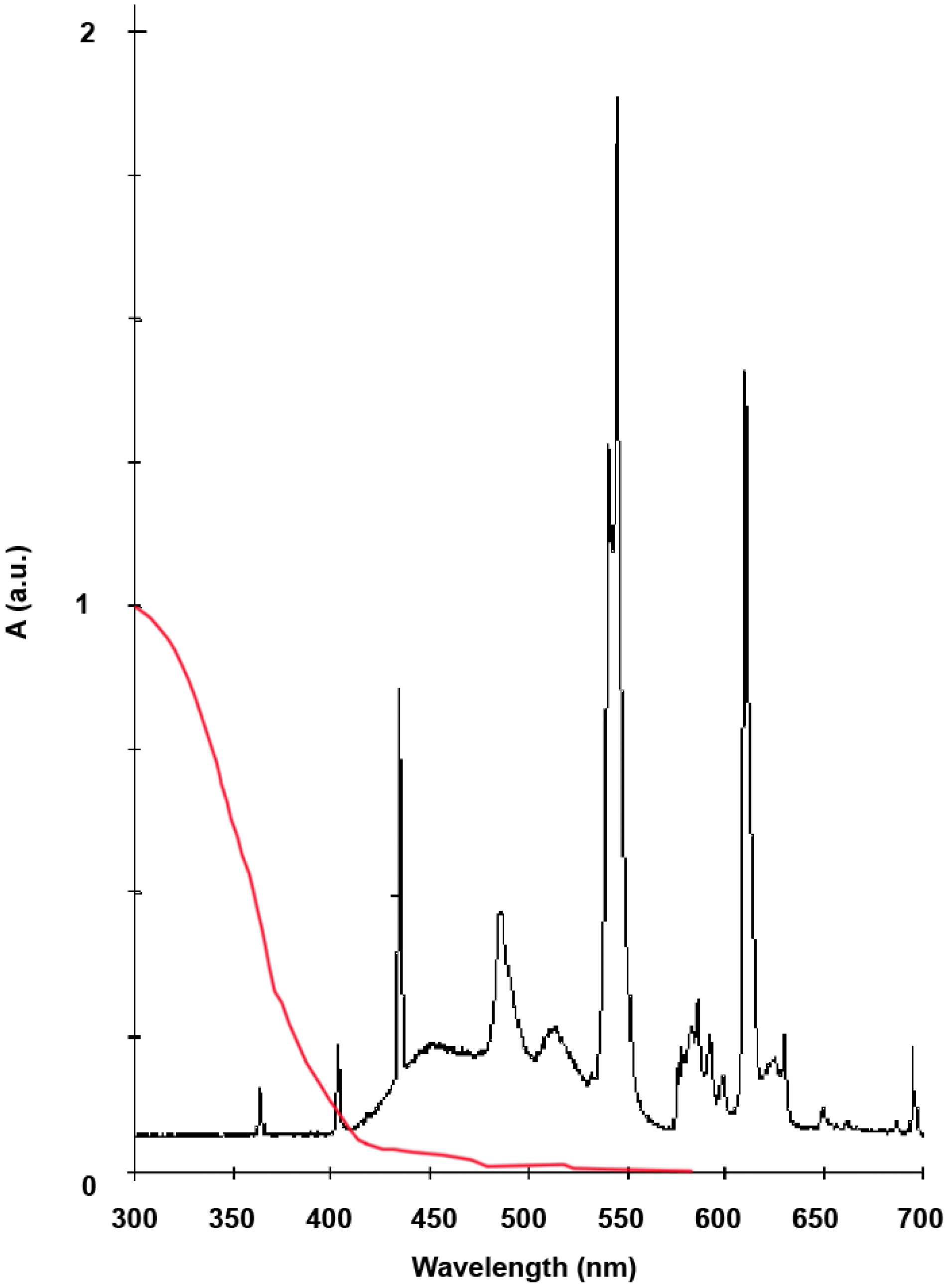
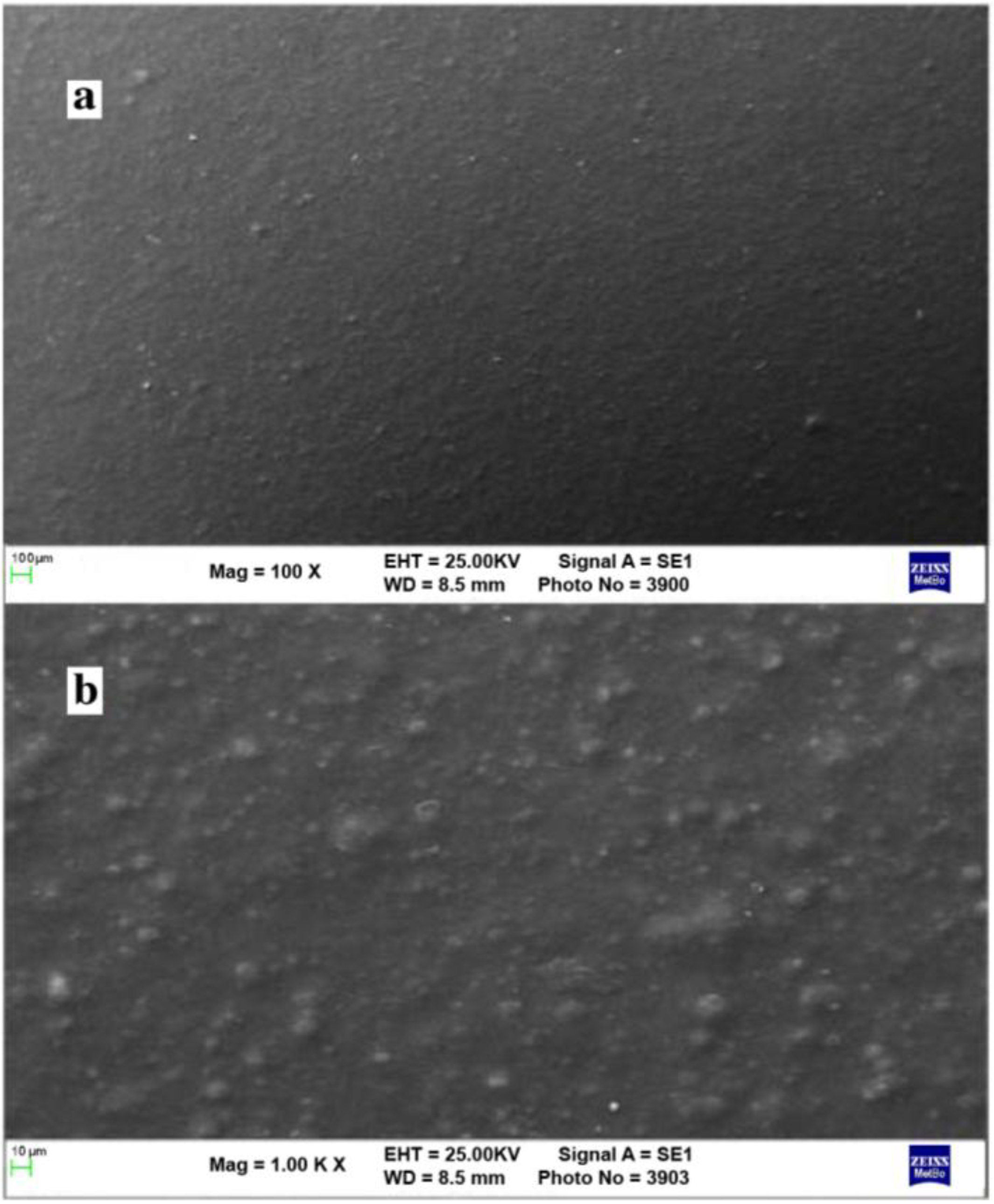
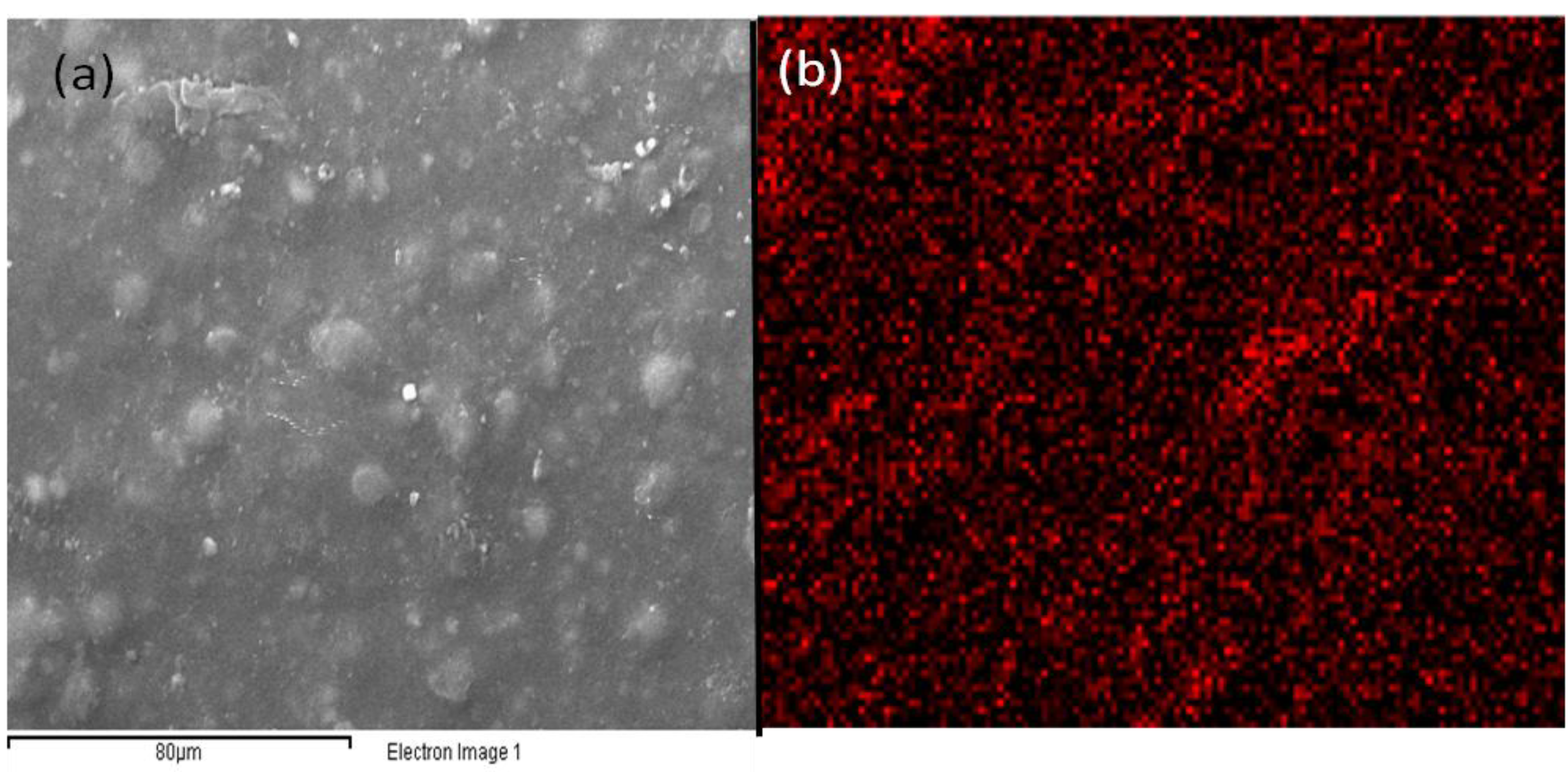
2.2. Evaluation of the Antibacterial Activity
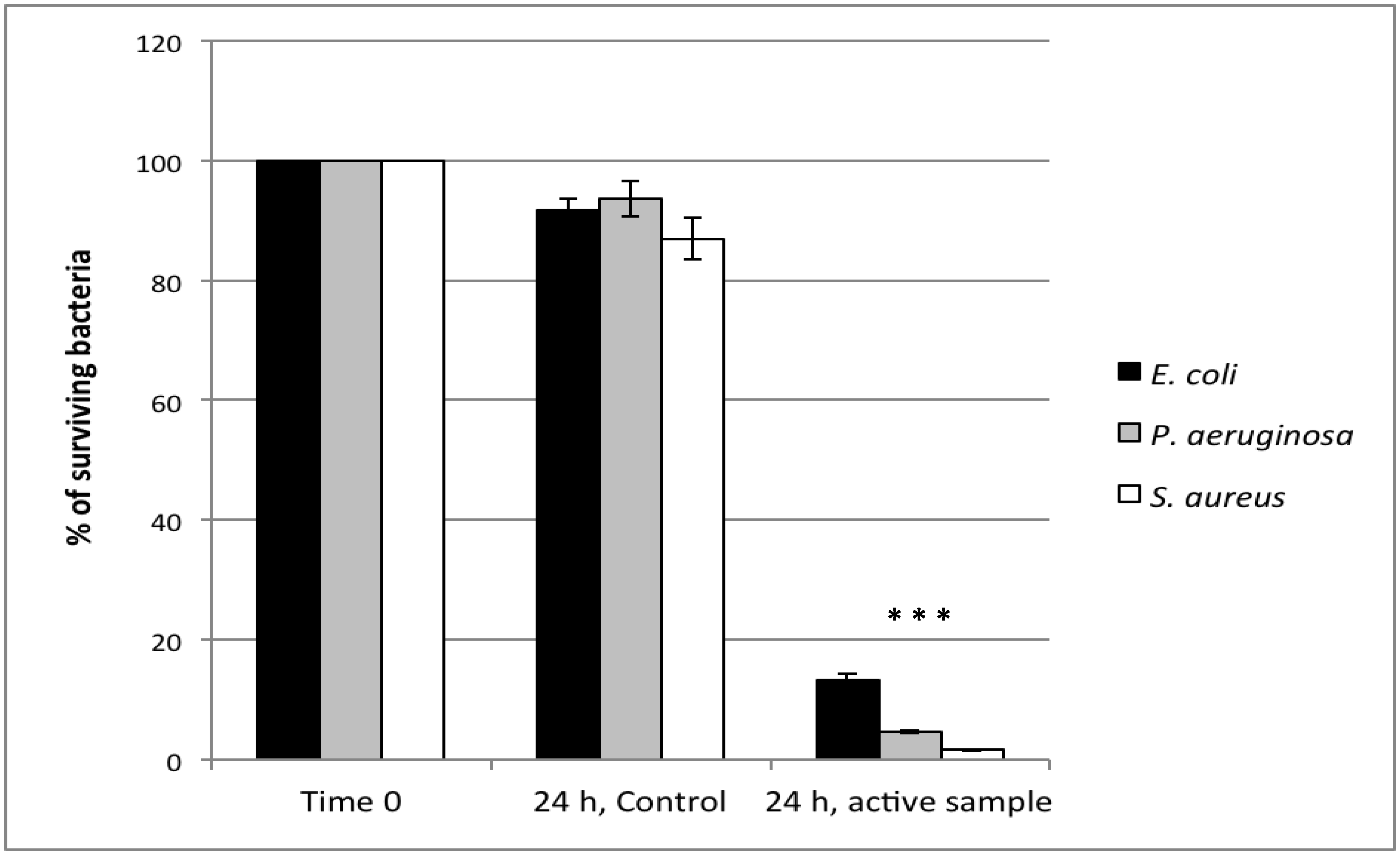
3. Experimental Section
3.1. Chemicals
3.2. Synthesis of the Acrylic Photocatalytic Paints
3.3. Morphological Characterization
3.4. XRD Analysis
3.5. Specific Surface Area
3.6. Spectroscopic Characterization
3.7. Evaluation of Photocatalytic Bactericidal Activity
4. Conclusions
Acknowledgments
Conflict of Interest
References
- Wong, M.S.; Chu, W.C.; Sun, D.S.; Huang, H.S.; Chen, J.H.; Tsai, P.J.; Lin, N.T.; Yu, M.S.; Hsu, S.F.; Wang, S.L.; et al. Visible-light-induced bactericidal activity of a nitrogen-doped titanium photocatalyst against human pathogens. Appl. Environ. Microbiol. 2006, 72, 6111–6116. [Google Scholar] [PubMed]
- Banerjee, S.; Gopal, J.; Muraleedharan, P.; Tyagi, A.K.; Raj, B. Physics and chemistry of photocatalytic titanium dioxide: Visualization of bactericidal activity using atomic force microscopy. Curr. Sci. 2006, 90, 1378–1383. [Google Scholar]
- Tsai, T.-M.; Chang, H.-H.; Chang, K.-C.; Liu, Y.-L.; Tseng, C.-C. A comparative study of the bactericidal effect of photocatalytic oxidation by TiO2 on antibiotic-resistant and antibiotic-sensitive bacteria. J. Chem. Technol. Biotechnol. 2010, 85, 1642–1653. [Google Scholar] [CrossRef]
- Gaya, U.I.; Abdullah, A.H. Heterogeneous photocatalytic degradation of organic contaminants over titanium dioxide. A review of fundamentals, progress and problems. J. Photochem. Photobiol. C Photochem. Rev. 2008, 9, 1–12. [Google Scholar] [CrossRef] [Green Version]
- Li, Y.; Sun, X.; Li, H.; Wang, S.; Wei, Y. Preparation of anatase TiO2 nanoparticles with high thermal stability and specific surface area by alcohothermal method. Powder Technol. 2009, 194, 149–152. [Google Scholar] [CrossRef]
- Chung, C.J.; Lin, H.I.; Chou, C.M.; Hsieh, P.Y.; Hsiao, C.H.; Shi, Z.Y.; He, J.L. Inactivation of Staphylococcus aureus and Escherichia coli under various light sources on photocatalytic titanium dioxide thin film. Surf. Coat. Tech. 2009, 203, 1081–1085. [Google Scholar] [CrossRef]
- Desai, V.S.; Kowshik, M. Antimicrobial activity of titanium dioxide nanoparticles synthesized by sol-gel technique. Res. J. Microbiol. 2009, 4, 97–103. [Google Scholar] [CrossRef]
- Joo, H.C.; Lim, Y.J.; Kim, M.J.; Kwon, H.B.; Han, J.H. Characterization on titanium surfaces and its effect on photocatalytic bactericidal activity. Appl. Surf. Sci. 2010, 257, 741–746. [Google Scholar] [CrossRef]
- Dunlop, P.S.M.; Sheeran, C.P.; Byrne, J.A.; McMahon, M.A.S.; Boyle, M.A.; McGuigan, K.G. Inactivation of clinically relevant pathogens by photocatalytic coatings. J. Photochem. Photobiol. A Chem. 2010, 216, 303–310. [Google Scholar] [CrossRef]
- Hua, D.; Cheuk, K.; Zheng, W.N.; Wen, C.; Xiao, C.F. Low temperature preparation of nano TiO2 and its application as antibacterial agents. Trans. Nonferrous Met. Soc. China 2007, 17, 700–703. [Google Scholar]
- Allen, N.S.; Edge, M.; Verran, J.; Stratton, J.; Maltby, J.; Bygott, C. Photocatalytic titania based surfaces: Environmental benefits. Polym. Degrad. Stabil. 2008, 93, 1632–1646. [Google Scholar] [CrossRef]
- Yeung, K.L.; Leung, W.K.; Yao, N.; Cao, S. Reactivity and antimicrobial properties of nanostructured titanium dioxide. Catal. Today 2009, 143, 218–224. [Google Scholar] [CrossRef]
- Sisti, L.; Cruciani, L.; Totaro, G.; Vannini, M.; Berti, C.; Tobaldi, D.M.; Tucci, A.; Aloisio, I.; Di Gioia, D.; Commereuc, S. TiO2 deposition on the surface of activated fluoropolymer substrate. Thin Solid Films 2012, 520, 2824–2828. [Google Scholar] [CrossRef]
- Dunlop, P.S.M.; McMurray, T.A.; Hamilton, J.W.J.; Byrne, J.A. Photocatalytic inactivation of Clostridium perfringens spores on TiO2 electrodes. J. Photochem. Photobiol. A Chem. 2008, 196, 113–119. [Google Scholar] [CrossRef]
- Evans, P.; Sheel, D.W. Photoactive and antibacterial TiO2 thin films on stainless steel. Surf. Coat. Tech. 2007, 201, 9319–9324. [Google Scholar] [CrossRef]
- Vijay, M.; Selvarajan, V.; Ananthapadmanabhan, P.V.; Sreekumar, K.P.; Stengl, V.; Bondioli, F. Bactericidal effects of reactive thermal plasma synthesized titanium dioxide photocatalysts. J. Phys. 2010, 208, 012143:1–012143:8. [Google Scholar]
- Kangwansupamonkon, W.; Lauruengtana, V.; Surassmo, S.; Ruktanonchai, U. Antibacterial effect of apatite-coated titanium dioxide for textiles applications. Nanomed. Nanotechnol. Biol. Med. 2009, 5, 240–249. [Google Scholar] [CrossRef]
- Tarquinio, K.M.; Kothurkar, N.K.; Goswami, D.Y.; Sanders, R.C., Jr.; Zaritsky, A.L.; LeVine, A.M. Bactericidal effects of silver plus titanium dioxide-coated endotracheal tubes on Pseudomonas aeruginosa and Staphylococcus aureus. Int. J. Nanomed. 2010, 5, 177–183. [Google Scholar] [CrossRef]
- Foster, H.A.; Sheel, D.W.; Sheel, P.; Evans, P.; Varghese, S.; Rutschke, N.; Yates, H.M. Antimicrobial activity of titania/silver and titania/copper films prepared by CVD. J. Photoch. Photobiol. A Chem. 2010, 216, 283–289. [Google Scholar] [CrossRef]
- Wong, M.S.; Sun, D.S.; Chang, H.H. Bactericidal performance of visible-light responsive titania photocatalyst with silver nanostructures. PLoS One 2010, 5, e10394:1–e10394:7. [Google Scholar]
- Tomohiko, A.; Hironobu, K.; Toshiyuki, T.; Koutaro, S.; Hiroyuki, S.; Koumei, B.; Hiroshi, T.; Nao, T. The bactericidal efficacy of a photocatalytic TiO2 particle mixture with oxidizer against Staphylococcus aureus. Jpn. J. Infect. Dis. 2009, 62, 378–380. [Google Scholar] [PubMed]
- Liu, H.L.; Yang, T.C.K. Photocatalytic inactivation of Escherichia coli and Lactobacillus helveticus by ZnO and TiO2 activated with ultraviolet light. Process. Biochem. 2003, 39, 475–481. [Google Scholar] [CrossRef]
- Egerton, T.A. Does photoelectrocatalysis by TiO2 work? J. Chem. Technol. Biotechnol. 2011, 86, 1024–1031. [Google Scholar] [CrossRef]
- Chung, C.J.; Lin, H.I.; Tsou, H.K.; Shi, Z.Y.; He, J.L. An antimicrobial TiO2 coating for reducing hospital-acquired infection. J. Biomed. Mater. Res. B Appl. Biomat. 2008, 85, 220–224. [Google Scholar] [CrossRef]
- Koseki, H.; Shiraishi, K.; Tsurumoto, T.; Asahara, T.; Baba, K.; Taoda, H.; Terasakid, N.; Shindo, H. Bactericidal performance of photocatalytic titanium dioxide particlemixture under ultraviolet and fluorescent light: An in vitro study. Surf. Interface Anal. 2009, 41, 771–774. [Google Scholar] [CrossRef]
- Caballero, L.; Whitehead, K.A.; Allen, N.S.; Verran, J. Inactivation of Escherichia coli on immobilized TiO2 using fluorescent light. J. Photochem. Photobiol. A Chem. 2009, 202, 92–98. [Google Scholar] [CrossRef]
- Caballero, L.; Whitehead, K.A.; Allen, N.S.; Verran, J. Photoinactivation of Escherichia coli on acrylic paint formulations using fluorescent light. Dyes Pigment. 2010, 86, 56–62. [Google Scholar] [CrossRef]
- Hochmannova, L.; Vytrasova, J. Photocatalytic and antimicrobial effects of interior paints. Prog. Org. Coat. 2010, 67, 1–5. [Google Scholar] [CrossRef]
- Day, R.E. The role of titanium dioxide pigments in the degradation and stabilisation of polymers in the plastics industry. Polym. Degrad. Stabil. 1990, 29, 73–92. [Google Scholar] [CrossRef]
- Peleg, A.Y.; Hooper, D.C. Hospital-acquired infections due to gram-negative bacteria. N. Engl. J. Med. 2010, 362, 1804–1813. [Google Scholar] [CrossRef] [PubMed]
- Rosenthal, V.D.; Maki, D.G.; Salomao, R.; Moreno, C.A.; Mehta, Y.; Higuera, F.; Cuellar, L.E.; Arikan, O.A.; Abouqal, R.; Leblebicioglu, H. Device-associated nosocomial infections in 55 intensive care units of developing countries. Ann. Intern. Med. 2006, 145, 582–591. [Google Scholar] [CrossRef] [PubMed]
- Gaynes, R.; Edwards, J.R. The National Nosocomial Infection Surveillance System. Overview of nosocomial infections caused by Gram-negative bacilli. Clin. Infect. Dis. 2005, 41, 848–854. [Google Scholar] [CrossRef] [PubMed]
- Yu, J.C.; Xie, Y.; Tang, H.Y.; Zhang, L.; Chanb, H.C.; Zhao, J. Visible light-assisted bactericidal effect of metalphthalocyanine-sensitized titanium dioxide films. J. Photochem. Photobiol. A Chem. 2003, 156, 235–241. [Google Scholar] [CrossRef]
- Mandzy, N.; Grulke, E.; Druffel, T. Breakage of TiO2 agglomerates in electrostatically stabilized aqueous dispersions. Powder Technol. 2005, 160, 121–126. [Google Scholar] [CrossRef]
- Ohtani, B.; Prieto-Mahaney, O.O.; Li, D.; Abe, R. What is Degussa (Evonik) P25? Crystalline compositionanalysis, reconstruction from isolated pure particles and photocatalytic activity test. J. Photochem. Photobiol. A Chem. 2010, 216, 179–172. [Google Scholar]
- Kim, D.S.; Han, S.J.; Kwak, S.-J. Synthesis and photocatalytic activity of mesoporous TiO2 with the surface area, crystallite size, and pore size. J. Colloid Interf. Sci. 2007, 316, 85–91. [Google Scholar] [CrossRef]
- Kongsuebchart, W.; Praserthdam, P.; Panpranot, J.; Sirisuk, A.; Supphasrirongjaroen, P.; Satayaprasert, C. Effect of crystallite size on the surface defect of nano-TiO2 prepared via solvothermal synthesis. J. Cryst. Growth 2006, 297, 234–238. [Google Scholar] [CrossRef]
- Gao, L.; Zhang, Q. Effects of amorphous contents and particle size on the photocatalytic properties of TiO2 nanoparticles. Scr. Mater. 2001, 44, 1195–1198. [Google Scholar] [CrossRef]
- Wang, G. Hydrothermal synthesis and photocatalytic activity of nanocrystalline TiO2 powders in ethanol–water mixed solutions. J. Mol. Catal. A Chem. 2007, 274, 185–191. [Google Scholar] [CrossRef]
- UNI–ISO 2409/2007. Available online: http://www.iso.org/iso/catalogue_detail.htm?csnumber=37487 (accessed on 31 July 2013).
- UNI 9427/1989. Available online: http://store.uni.com/magento-1.4.0.1/index.php/uni-9427-1989.html?josso_back_to=http://store.uni.com/josso-security-check.php&josso_cmd=login_optional&josso_partnerapp_host=store.uni.com (accessed on 31 July 2013).
- Solberg, C.O. Spread of Staphylococcus aureus in hospitals: Causes and prevention. Scand. J. Infect. Dis. 2000, 32, 587–595. [Google Scholar] [CrossRef] [PubMed]
- Driscoll, J.A.; Brody, S.L.; Kollef, M.H. The epidemiology, pathogenesis and treatment of Pseudomonas aeruginosa infections. Drugs 2007, 67, 351–368. [Google Scholar] [CrossRef] [PubMed]
- UNI 10782:1999. Available online: http://infostore.saiglobal.com/store/details.aspx?ProductID=598918 (accessed on 31 July 2013).
- Colonna, M.; Berti, C.; Binassi, E.; Fiorini, M.; Sullalti, S.; Acquasanta, F.; Vannini, M.; Di Gioia, D.; Aloisio, I. Imidazolium poly(butylene terephthalate) ionomers with long-term antimicrobial activity. Polymer 2012, 53, 1823–1830. [Google Scholar] [CrossRef]
- Colonna, M.; Berti, C.; Binassi, E.; Fiorini, M.; Sullalti, S.; Acquasanta, F.; Vannini, M.; Di Gioia, D.; Aloisio, I.; Karanam, S.; et al. Synthesis and characterization of imidazolium telechelic poly(butylene terephthalate) for antimicrobial applications. React. Funct. Polym. 2012, 72, 133–141. [Google Scholar] [CrossRef]
© 2013 by the authors; licensee MDPI, Basel, Switzerland. This article is an open access article distributed under the terms and conditions of the Creative Commons Attribution license (http://creativecommons.org/licenses/by/3.0/).
Share and Cite
Zuccheri, T.; Colonna, M.; Stefanini, I.; Santini, C.; Gioia, D.D. Bactericidal Activity of Aqueous Acrylic Paint Dispersion for Wooden Substrates Based on TiO2 Nanoparticles Activated by Fluorescent Light. Materials 2013, 6, 3270-3283. https://doi.org/10.3390/ma6083270
Zuccheri T, Colonna M, Stefanini I, Santini C, Gioia DD. Bactericidal Activity of Aqueous Acrylic Paint Dispersion for Wooden Substrates Based on TiO2 Nanoparticles Activated by Fluorescent Light. Materials. 2013; 6(8):3270-3283. https://doi.org/10.3390/ma6083270
Chicago/Turabian StyleZuccheri, Tommaso, Martino Colonna, Ilaria Stefanini, Cecilia Santini, and Diana Di Gioia. 2013. "Bactericidal Activity of Aqueous Acrylic Paint Dispersion for Wooden Substrates Based on TiO2 Nanoparticles Activated by Fluorescent Light" Materials 6, no. 8: 3270-3283. https://doi.org/10.3390/ma6083270






